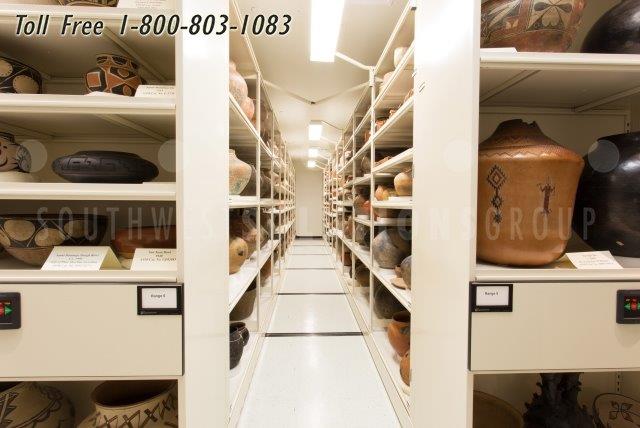 With increased demands on storage and access to research and exhibition areas, museums are finding it harder than ever to safely preserve their extensive collections. Since most museums only display about 5% or less of their total collection at any given time, it’s essential to maintain the rest of the specimens in storage that will protect them against the most common agents of deterioration. Thanks to modern science and technology, we are more informed than ever about the most prevalent threats to sensitive museum collections—and the most effective ways to combat them. Read on to learn how to protect your stored museum collections from the top 10 agents of deterioration:
With increased demands on storage and access to research and exhibition areas, museums are finding it harder than ever to safely preserve their extensive collections. Since most museums only display about 5% or less of their total collection at any given time, it’s essential to maintain the rest of the specimens in storage that will protect them against the most common agents of deterioration. Thanks to modern science and technology, we are more informed than ever about the most prevalent threats to sensitive museum collections—and the most effective ways to combat them. Read on to learn how to protect your stored museum collections from the top 10 agents of deterioration:
Direct Physical Forces
Direct physical forces are a common source of damage to museum specimens. Severe cases of this include sudden shocks like an earthquake or dropping an object. But even smaller movements and vibrations caused by seismic activity, mishandling, bumping, rolling carts, or even walking can deteriorate sensitive specimens over time.
Mitigate these risks by equipping your shelving with stabilizing accessories. For museums in locations prone to seismic activity, enhance the reliability of your compact shelving with anti-tip rail systems. Installing anti-tip bars along shelves is another prudent measure to prevent stored objects from falling. For additional stability, attach cabinets back to back, which can be accomplished with closed rib nuts. Check out more of our museum storage solutions here.
Pests
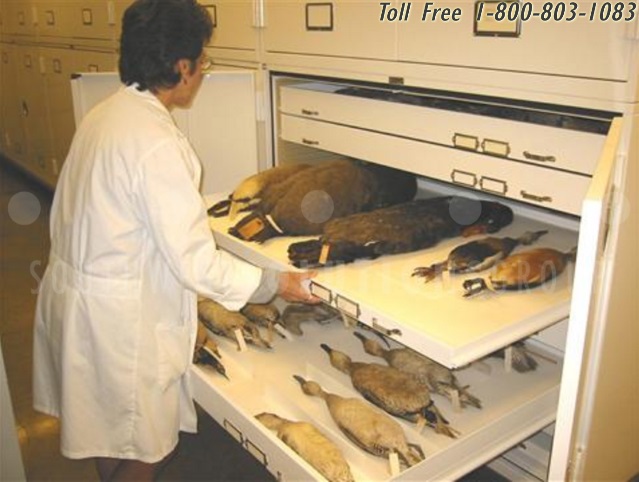 A pest invasion can be detrimental to a valuable museum collection. Organic collections tend to attract insects and rodents, which eat or nest in them. When stored in humid conditions, organic material is also vulnerable to mold growth. These pests can consume and destroy your specimens if you don’t take the proper precautions.
A pest invasion can be detrimental to a valuable museum collection. Organic collections tend to attract insects and rodents, which eat or nest in them. When stored in humid conditions, organic material is also vulnerable to mold growth. These pests can consume and destroy your specimens if you don’t take the proper precautions.
To guard against infestations, store organic collections in raised cabinets which are easy to clean and inspect. Using light-colored equipment and storage will make it easier for you to detect the beginnings of an infestation and prevent irreparable damage. The best way to keep pests out is to thoroughly seal your cabinets with door sweeps and caulk, around the interior and exterior doors, ductwork, and baseboards. If you’re more concerned about mold, however, consider perforated shelving for improved ventilation.
Fire
A fire can be devastating to a museum collection. Not only will fire wipe out valuable collections but smoke and soot can also damage and dirty specimens. Proper storage and fire suppression systems are essential to guard against this threat.
The Viking 920 cabinet series by Spacesaver has been proven to provide optimal protection for museum collections in the event of a fire, with stored artifacts suffering minimal damage under the cabinet’s direct exposure to flames. But there are other measures you can take to minimize the risk of a fire. Spacesaver’s compactors (high-density compact shelving units) come equipped with a Fire Park feature that automatically spaces all the carriages equally to minimize the spread of a fire. Fire-code-compliant perforated shelves facilitate sprinklers, for collections less vulnerable to water damage. And consider fire suppression when planning the height of your shelves. Since fire code regulations vary, consult your local fire marshal for the best fire suppression system for your collection.
 See Museum Storage Solutions Prices
See Museum Storage Solutions Prices
See Museum storage shelving, racks, & cabinets prices
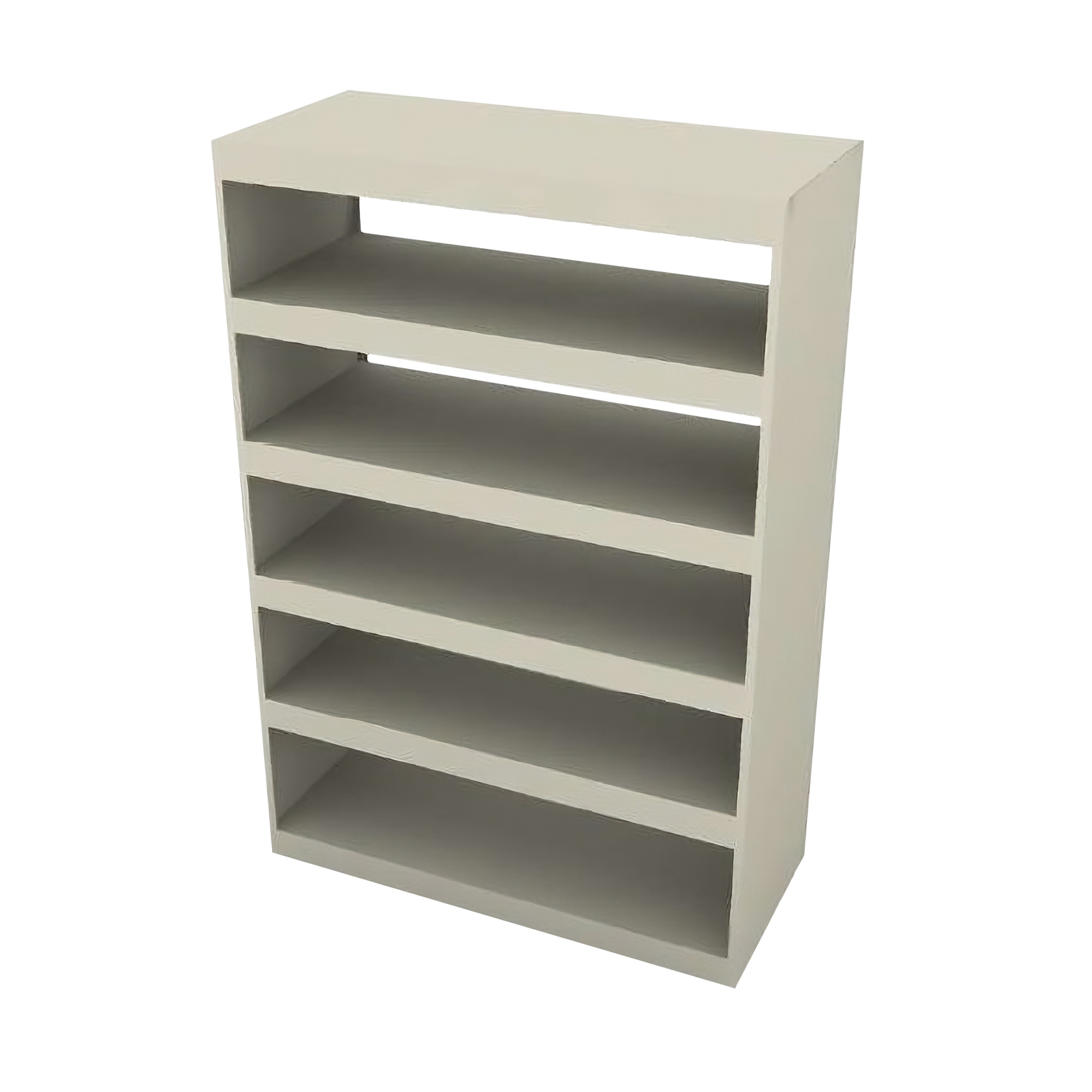 All Museum Storage Solutions
All Museum Storage Solutions
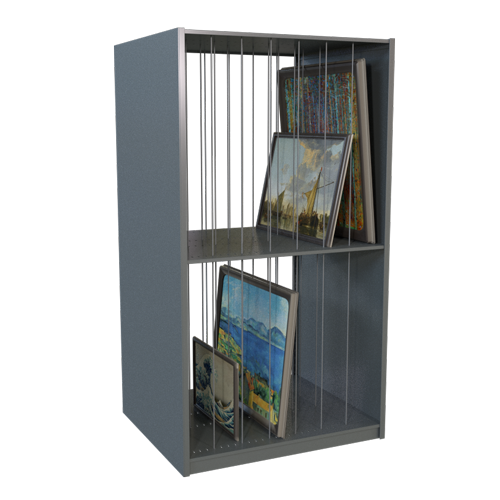 Art Storage Shelving
Art Storage Shelving
 Wall Art Display Panels
Wall Art Display Panels
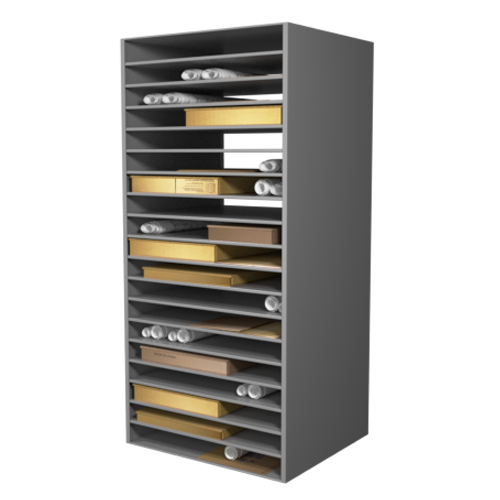 Works on Paper Storage Shelving
Works on Paper Storage Shelving
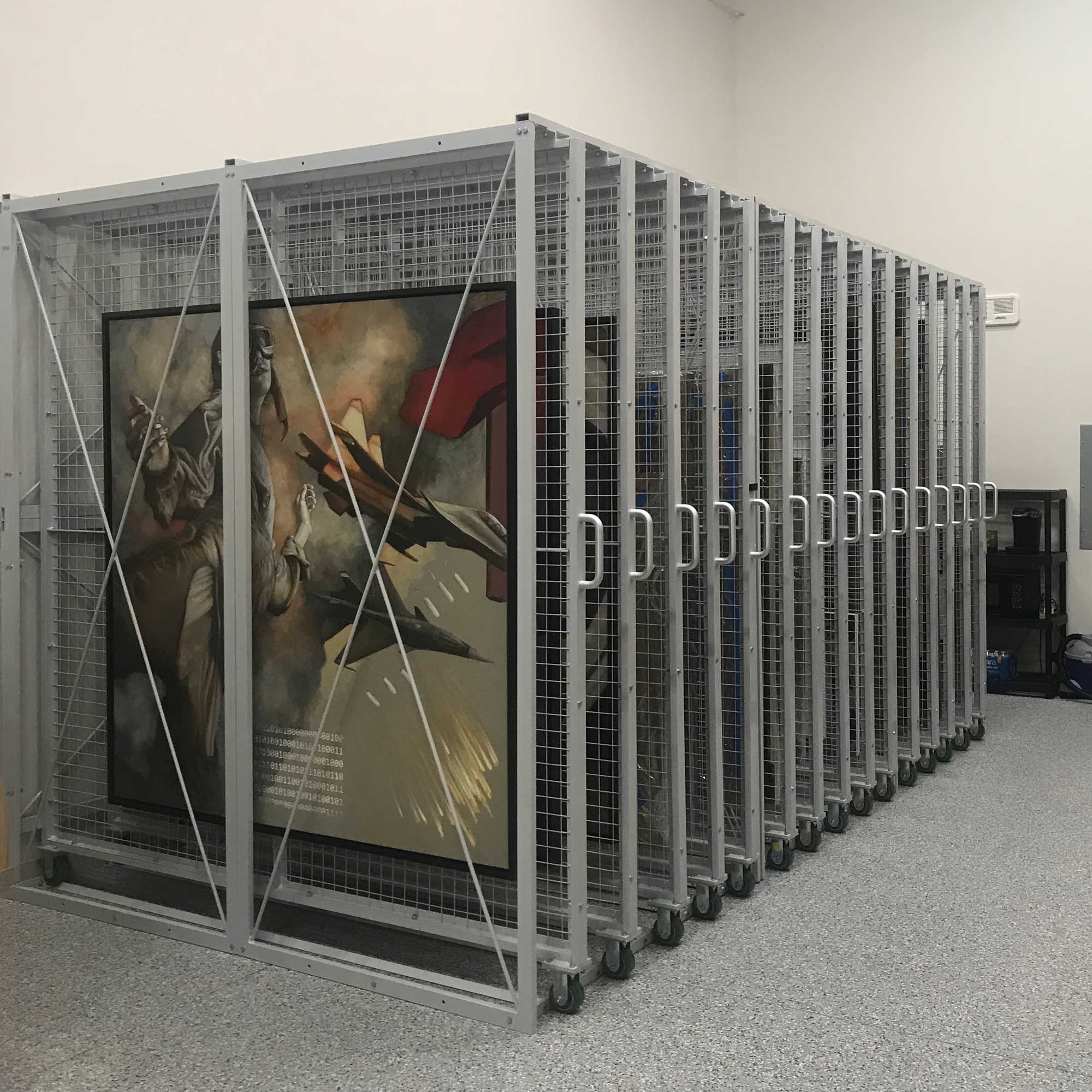 Pull-out Art Panel Racks
Pull-out Art Panel Racks
Water
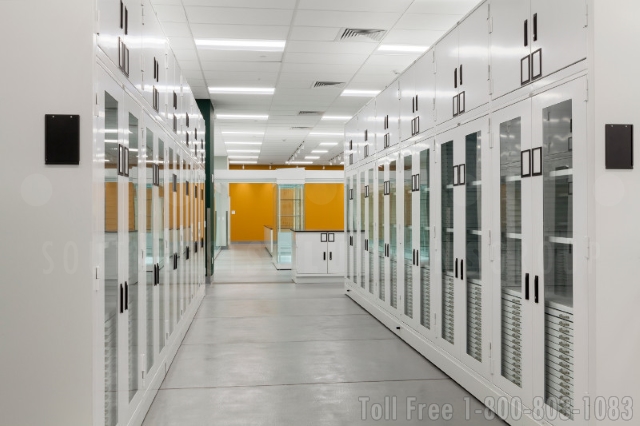 Water is another agent that can threaten sensitive museum artifacts including paper documents and more. Floods, leaking roofs or pipes, or rising dampness can cause irreparable damage to such collections, and those stored in subterranean locations are especially vulnerable.
Water is another agent that can threaten sensitive museum artifacts including paper documents and more. Floods, leaking roofs or pipes, or rising dampness can cause irreparable damage to such collections, and those stored in subterranean locations are especially vulnerable.
Protect your valuable collections from water damage by choosing appropriate storage. Metal shelving has a higher resistance to water damage than materials like wood or particle-board. Steel compactors mitigate the risk of flood damage by raising the shelves 4-6” off the floor, above the most common flood level. In addition, be sure your cabinets protect against sprinklers and leaks. Viking cabinets from Spacesaver come equipped with a WaterShield cap and seals designed to secure your museum storage against water damage.
Contaminants
From airborne particles to pollutants transferred by human contact to acids intrinsic to your specimens, contaminants can accelerate the chemical deterioration of the materials stored in your collection. The seven pollutants that are most harmful to museum collections are as follows: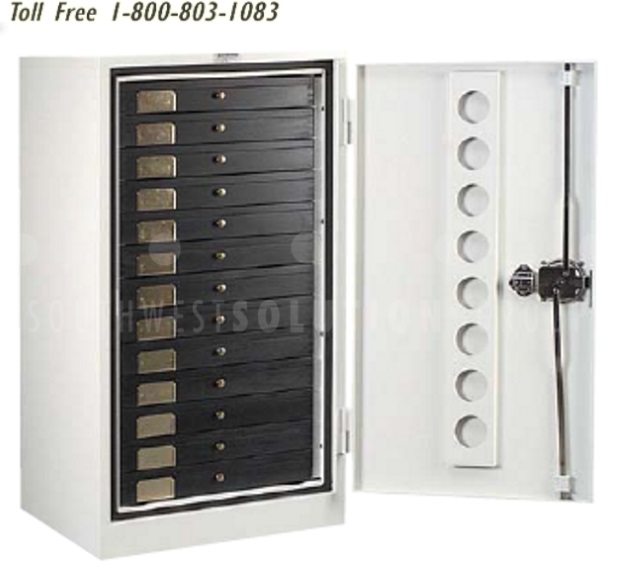
- Acetic acid
- Hydrogen sulfide
- Nitrogen dioxide
- Ozone
- Sulfur dioxide
- Fine particles
- Water vapor
To protect your collection from these pollutants, store them in sealed cabinets, which helps shield them from contact with airborne contaminants. The Viking Closed-Cell Elastomeric Seal has proven effective in guarding stored collections against pollutants, and it is designed for easy replacement after decades of use. Spacesaver cabinets not only come equipped with a steel channel to house this adhesive closed-cell seal, but they also feature non-off-gassing paint to minimize chemical contamination. And when moving delicate artifacts in or out of storage, personnel should be sure to wear appropriate gloves to prevent the transfer of oils or other potentially damaging substances from human skin. Read more about the best solutions for museum collection storage, exhibition, and preservation here.
Theft, Vandalism, and Displacement
Naturally, humans are another source of danger to the conservation of museum collections. An unscrupulous individual might steal or maliciously damage valuable objects. There’s also the risk of museum staff accidentally misplacing artifacts.
The best way to guard against these events is through improved security and traceability. Locking options for compactors and other cabinets include physical locks, PIN code access, or key card access. This allows you to ensure that only authorized personnel can access your valuable collections. Consider also an audit trail system that will enable you to track who has accessed stored collections. This provides both tighter security and greater accountability among museum staff.
Incorrect Temperature
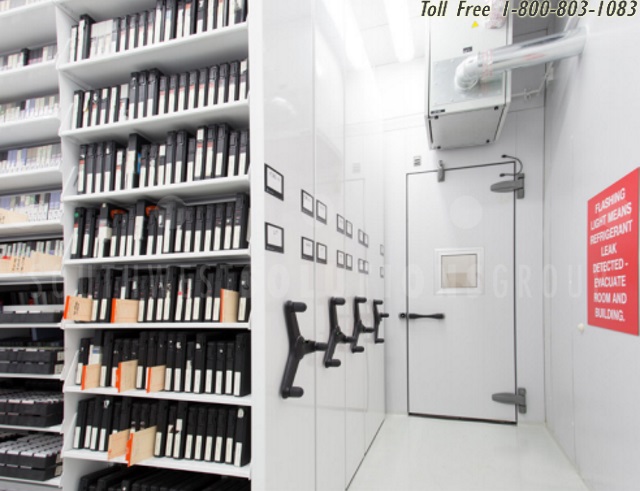 It’s essential to carefully control the temperature in your storage areas in order to preserve your museum collections safely. If the temperature is too high, it can accelerate the chemical deterioration of unstable materials. If the temperature is too low, it can stress flexible structures. And if the temperature fluctuates, due to seasonal changes for instance, materials might delaminate or crack.
It’s essential to carefully control the temperature in your storage areas in order to preserve your museum collections safely. If the temperature is too high, it can accelerate the chemical deterioration of unstable materials. If the temperature is too low, it can stress flexible structures. And if the temperature fluctuates, due to seasonal changes for instance, materials might delaminate or crack.
Control the temperature of your storage by investing in coolers or freezers appropriate to the size of your collection. Store smaller collections in upright refrigerators or freezers. Store medium-sized collections in shelving or cabinets housed in walk-in coolers. And for institutions with extensive collections, consider investing in compactors housed in walk-in freezers or cold rooms built specifically to accommodate your collection’s needs. And if these options don’t suit your temperature requirements, Spacesaver Viking cabinets also provide optimal temperature control to preserve your museum collections.
Incorrect Relative Humidity
It is equally essential to monitor the relative humidity level of your storage. A high level of relative humidity facilitates mold formation or rust, while a level that is too low causes specimens with paint, wood, or leather to dry and crack. And relative humidity that fluctuates rapidly will cause materials to expand and contract, leading to structural damage.
First, keep in mind that different collections require storage at different relative humidity levels, so you’ll need to adapt your solutions to suit the needs of each collection. Sealed cabinets are a good way to maintain a more constant climate condition for your specimens. In addition, silica gel is an economical moisture sorbent that is commonly used in museum collection storage to regulate relative humidity levels. It’s effective both as a drying and humidifying agent depending on the unique needs of your collections. Another sensible precaution is consulting HVAC specialists, especially if you house your collections in a historic building.
Radiation
Exposure to light also poses a risk to museum collections, as both visible light and UV radiation can cause discoloration and chemical deterioration over time. Prolonged exposure to radiation will leave sensitive materials faded and brittle.
The obvious solution to this problem is to limit your collections’ exposure to light. When storing your specimens in compactors, keep them closed when not in use and cover any windows to protect artifacts from ambient light. Equip your storage with LED aisle lights, which do not emit UV radiation. And automatic aisle lights minimize the amount of light your stored objects are exposed to.
Dissociation and Custodial Neglect
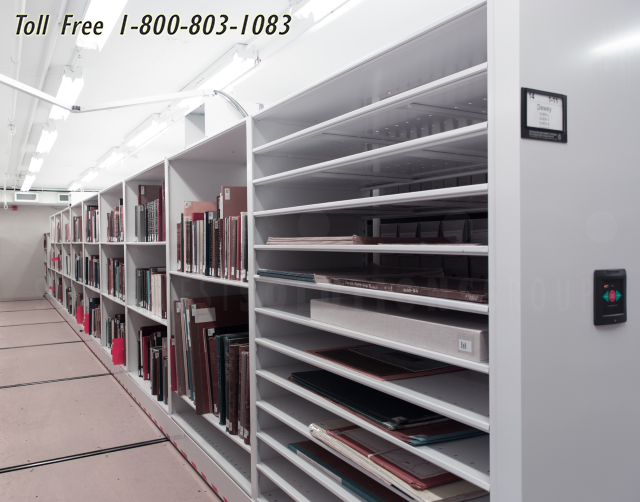 A final, unfortunate source of damage to museum collections is neglect. Collection abandonment and failure to maintain collections storage best practices can result in the loss of specimens or data, as objects may be separated from their records or the rest of their collection. Such negligence then leaves the objects vulnerable to other agents of deterioration.
A final, unfortunate source of damage to museum collections is neglect. Collection abandonment and failure to maintain collections storage best practices can result in the loss of specimens or data, as objects may be separated from their records or the rest of their collection. Such negligence then leaves the objects vulnerable to other agents of deterioration.
Prevent dissociation through a clear organization system. As much as possible, keep collections stored together in a single physical space. Discourage negligent practices by making it easy for staff to store specimens properly. Compactors are a practical solution to this problem since they provide convenient access to stored materials while accommodating a variety of storage types, including cabinets, drawers, wide-span shelving, and hanging racks. This allows you to store objects of different sizes in close proximity, keeping collections together.
Proper Storage is Essential for Preserving Museum Collections
When it comes to protecting your museum collections from damage by these 10 common agents of deterioration, selecting proper storage is critical. Keep in mind that some of these agents will pose more of a threat to your specific collection than others, depending on your situation and the types of artifacts you are storing. When seeking storage to house your collections, determine which of these issues are the most important to guard against. The solutions suggested above are just a few examples from the range of options available to protect your collections. Experts can work with you to find storage solutions designed to meet your unique needs for preserving your museum collections. Read more about what to consider when designing museum collection storage here.
Contact Us for Protective Museum Collection Storage
Southwest Solutions Group® provides design and installation services for high-density shelving and cabinets to store and protect your museum collections. SSG will even provide a free consultation to determine your exact needs before the design process begins. To learn more or to speak with a specialist, call us at 1-800-803-1083 or send us a message today.

 Museum storage brochure overview
Museum storage brochure overview Museum Cabinets Storage Systems
Museum Cabinets Storage Systems Museum Storage Overview
Museum Storage Overview Museum Collections Storage Guide
Museum Collections Storage Guide Museum Storage Collections
Museum Storage Collections





